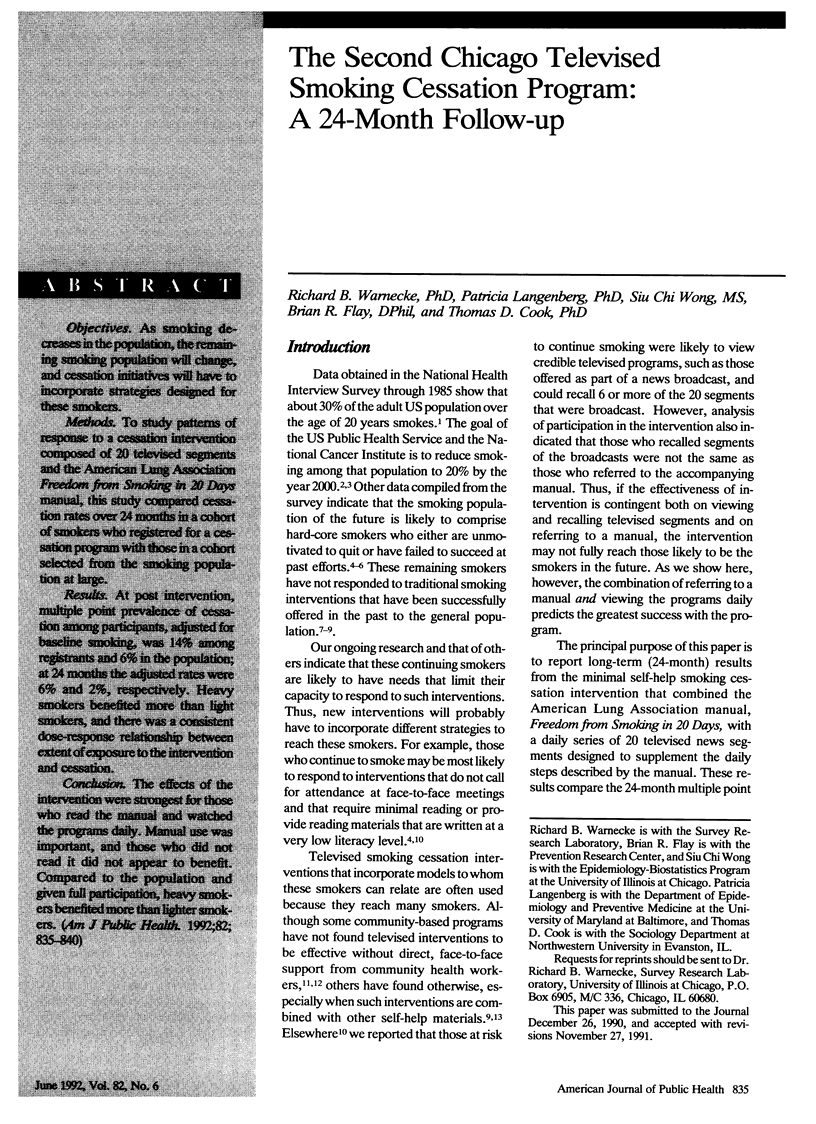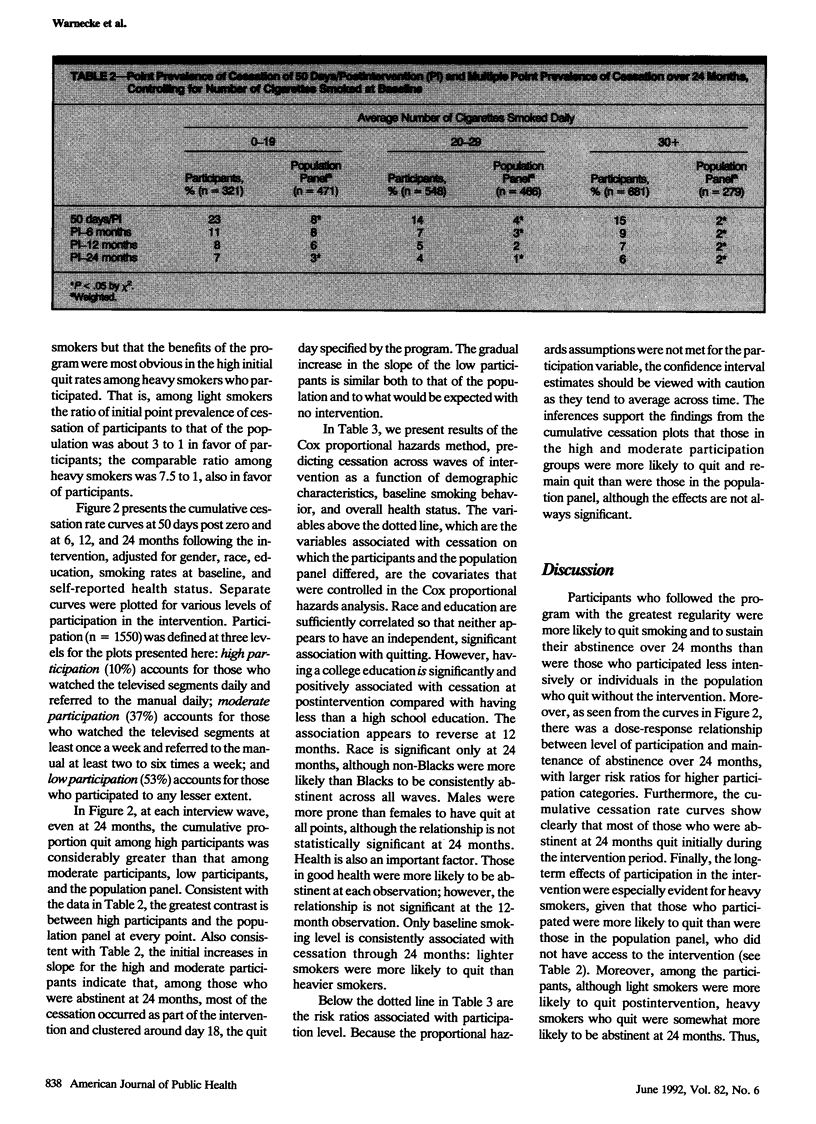Abstract
OBJECTIVES. As smoking decreases in the population, the remaining smoking population will change, and cessation initiatives will have to incorporate strategies designed for these smokers. METHODS. To study patterns of response to a cessation intervention composed of 20 televised segments and the American Lung Association Freedom from Smoking in 20 Days manual, this study compared cessation rates over 24 months in a cohort of smokers who registered for a cessation program with those in a cohort selected from the smoking population at large. RESULTS. At post intervention, multiple point prevalence of cessation among participants, adjusted for baseline smoking, was 14% among registrants and 6% in the population; at 24 months the adjusted rates were 6% and 2%, respectively. Heavy smokers benefited more than light smokers, and there was a consistent dose-response relationship between extent of exposure to the intervention and cessation. CONCLUSION. The effects of the intervention were strongest for those who read the manual and watched the programs daily. Manual use was important, and those who did not read it did not appear to benefit. Compared to the population and given full participation, heavy smokers benefited more than lighter smokers.
Full text
PDF





Selected References
These references are in PubMed. This may not be the complete list of references from this article.
- Fiore M. C., Novotny T. E., Pierce J. P., Hatziandreu E. J., Patel K. M., Davis R. M. Trends in cigarette smoking in the United States. The changing influence of gender and race. JAMA. 1989 Jan 6;261(1):49–55. [PubMed] [Google Scholar]
- Glynn T. J., Boyd G. M., Gruman J. C. Essential elements of self-help/minimal intervention strategies for smoking cessation. Health Educ Q. 1990 Fall;17(3):329–345. doi: 10.1177/109019819001700308. [DOI] [PubMed] [Google Scholar]
- Maccoby N., Farquhar J. W. Communication for health: unselling heart disease. J Commun. 1975 Summer;25(3):114–126. doi: 10.1111/j.1460-2466.1975.tb00613.x. [DOI] [PubMed] [Google Scholar]
- Pierce J. P., Fiore M. C., Novotny T. E., Hatziandreu E. J., Davis R. M. Trends in cigarette smoking in the United States. Educational differences are increasing. JAMA. 1989 Jan 6;261(1):56–60. [PubMed] [Google Scholar]
- Pierce J. P., Fiore M. C., Novotny T. E., Hatziandreu E. J., Davis R. M. Trends in cigarette smoking in the United States. Projections to the year 2000. JAMA. 1989 Jan 6;261(1):61–65. [PubMed] [Google Scholar]
- Ramirez A. G., McAlister A. L. Mass media campaign--A Su Salud. Prev Med. 1988 Sep;17(5):608–621. doi: 10.1016/0091-7435(88)90054-0. [DOI] [PubMed] [Google Scholar]
- Warnecke R. B., Flay B. R., Kviz F. J., Gruder C. L., Langenberg P., Crittenden K. S., Mermelstein R. J., Aitken M., Wong S. C., Cook T. D. Characteristics of participants in a televised smoking cessation intervention. Prev Med. 1991 May;20(3):389–403. doi: 10.1016/0091-7435(91)90037-5. [DOI] [PubMed] [Google Scholar]
- Warnecke R. B., Langenberg P., Gruder C. L., Flay B. R., Jason L. A. Factors in smoking cessation among participants in a televised intervention. Prev Med. 1989 Nov;18(6):833–846. doi: 10.1016/0091-7435(89)90019-4. [DOI] [PubMed] [Google Scholar]


